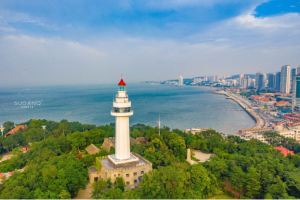The winds that whip the towns of the Eastern Cape in South Africa have the power to generate energy. But on a dry, hot day, those winds can gather up embers and dump them into tinder dry savannah and forest, destroying crops, fodder and homes, and taking lives.
Wild fires create their own weather systems, generating fire storms with devastating effects. Global warming will increase the number of days of shimmering heat, creating the ideal conditions for fire. In the past months, southern Europe and North Africa have experienced record-breaking temperatures and fierce fires, and the terrible effects of both on human lives, habitat and environment. The southern hemisphere is next.
But heat, not fire, is the major cause of death worldwide. The extremes in Europe and the US augur future changes globally. Countries throughout southern Africa, parts of east Africa and Madagascar are all projected to face rapidly increasing temperatures to the end of this century.
I am an anthropologist and public health academic, working both in Australia and South Africa. Both countries are recurrently affected by the El Niño–Southern Oscillation and resultant sea rise, with floods, drought and higher temperature in its wake. Global warming and El Niño combined suggest that the years ahead will result in increasing, devastating impacts.
Heat, air quality and health
As is clear from reports from multilateral agencies such as the Intergovernmental Panel on Climate Change and national bodies such as the US Global Change Research Program, high temperatures can be fatal, and vast populations worldwide are vulnerable.
High temperatures cause heat stroke, heat exhaustion, heart attacks, strokes and other cardiovascular disease.
South Africa will experience more heat waves, so more heat-related deaths are likely. People in informal settlements, and badly maintained and crowded buildings, are especially vulnerable to heat stress.
Cities are also hot spots. Heat absorbed by roads and buildings results in the urban “heat island effect”, while increased use of energy for cooling adds to greenhouse gas emissions.
Less food, lower nutrition
On the continent food security is directly threatened by extreme events, but also more broadly by climate change and global warming. In South Africa, drought recurrently affects subsistence agriculture, livestock and commercial crops. This has already stimulated interest in local coping strategies faced with food insecurity.
The impact of drought on food and nutrition will be felt by the most vulnerable, including infants, small children and pregnant women and those who already live on or below the poverty line.
Large numbers of people across the continent live as subsistence farmers, and in the absence of food or water we are likely to see increased migration and humanitarian crises.
In South Africa, too, a large proportion of the population relies on subsistence farming or other small-scale farming. Crop failure and drought, combined with increased food costs associated with disruptions to global food resources, will affect every one of us.
Every drop counts
Drought and water shortages add to these risk factors. Humans require adequate hydration to survive, and the combination of increasing temperatures and water shortages heightens the risk of organ failure and death.
In addition, dependence on poor quality and contaminated water has an impact on household and personal hygiene, and intestinal infections.
Vibrio cholerae – the bacteria that cause cholera – is present in waterways in both high and lower income countries, and infection can be mild. But increased concentrations of the bacteria without rapid intervention to prevent severe dehydration can be lethal. The sharp increase in cholera and other diarrhoeal diseases worldwide is associated with rising temperatures and drought.
Neglected diseases
Other viral and bacterial infectious diseases, especially prevalent in Africa, are also likely to increase with global warming. Bundled together as “neglected diseases of poverty”, these include both parasitic and viral vector borne diseases such as Rift Valley fever, malaria, filariasis, schistosomiasis, dengue fever, chikungunya and influenza as well as arboviruses such as different influenza pathogens.
The ways in which climate change will affect different vector borne disease will vary. Sluggish and stagnant waterways and polluted water sources are one risk factor.
There is growing evidence of mosquito migration to higher altitudes, infecting people who have not been exposed before.
At the same time, there is growing evidence of vector behavioural change and resistance to insecticides in some settings, including the Ifakara region of Tanzania.
So where does this leave us?
When the Intergovernmental Panel on Climate Change was established in 1988, we had a choice to interrupt climate change and slow global warming.
Globalisation, national politics and global capitalism have meant we have failed, and 35 years on we face an inevitable crisis.
This does not mean there is nothing we can do to halt the destruction of planetary life.
It does require that we urgently and radically change how we provide and use energy, how we live, and how we change living conditions for those who are, by the circumstances of their everyday lives, most at risk of the lethal effects of global warming.
BY STAFF REPORTER
Source : The conversation
THE ETHIOPIAN HERALD FRIDAY 8 SEPTEMBER 2023




